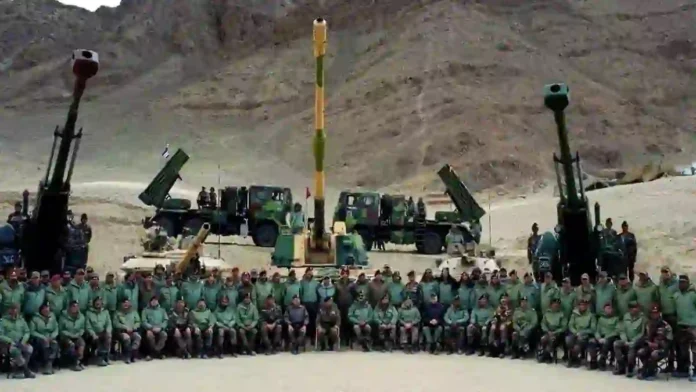India is currently conducting a large-scale strike corps exercise in Eastern Ladakh, involving all major combat elements, including artillery, armoured, and infantry troops. This exercise is part of India’s strategic response to the ongoing military standoff with China along the Line of Actual Control (LAC).
The exercise comes after a significant reorientation of Indian military forces towards the China border, particularly following the Galwan clash in June 2020, which resulted in the deaths of at least 20 Indian soldiers. Since then, India has maintained a robust military presence in the region, constructing new housing, all-weather roads, and communication networks to support its troops.
Key Features of The Exercise
Deployment of New Weapons: The ongoing exercise will showcase new weaponry acquired by the Indian armed forces over the past four years, aimed at countering the perceived Chinese threat.
Involvement of Major Combat Elements: The exercise includes over 500 tanks and armoured fighting vehicles, highlighting the scale and seriousness of the military preparations in the region.
Integrated Battle Groups (IBGs): The exercise is also a testbed for the IBG model, which is designed to enhance operational flexibility and effectiveness in high-altitude warfare.
Read- Z-Morh Tunnel To Open For Public By Sept 15
Strategic Implications
This military exercise underscores India’s commitment to maintaining a credible deterrent against China, especially given the ongoing tensions and the lack of progress in diplomatic talks to resolve the standoff. The Indian Army has been restructuring its forces to better address threats from the north, with the 1 Strike Corps being reoriented specifically for operations in Ladakh.
The large-scale strike corps exercise in Eastern Ladakh is a critical component of India’s military strategy in response to ongoing tensions with China, showcasing enhanced capabilities and readiness to address potential conflicts in the region.
Agencies




